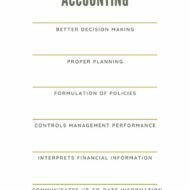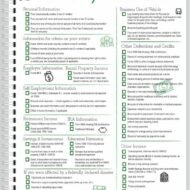Posted by Managementguru in Accounting, Financial Accounting, Management Accounting
on Feb 14th, 2014 | 0 comments

Liquidity Ratio or Working Capital Ratio Liquidity ratio indicates that the firm has sufficient liquid resources to meet its short-term liabilities. It measures the ability of the firm to meet its short-term obligations, i.e., capacity of the firm to pay its current liabilities as and when they fall due. Also known as “short-term solvency ratio” or “working-capital ratio”. Thus these ratios reflect the short-term financial solvency of a firm. The various ratios that explains about the liquidity of the firm are Current Ratio Acid Test Ratio / quick ratio Absolute liquid ration / cash ratio 1. CURRENT RATIO The current ratio measures the short-term solvency of the firm. It establishes the relationship between current assets and current liabilities. It is calculated by dividing current assets by current liabilities. An ideal ratio would be 2:1 which provides margin of safety to the creditors and financial stability. Current Ratio = Current Assets Current Liabilities Current assets cover cash and bank balances marketable securities inventory, and debtors, excluding provisions for bad debts and doubtful debtors Bills receivables and prepaid expenses. Current liabilities include sundry creditors bills payable short- term loans income-tax liability Accrued expenses and dividends payable. 2. ACID TEST RATIO / QUICK RATIO/LIQUID RATIO It has been an important indicator of the firm’s liquidity position and is used as a complementary ratio to the current ratio. It establishes the relationship between quick assets and current liabilities. It is calculated by dividing quick assets by the current liabilities. Acid Test Ratio = Liquid Assets Current liabilities Liquid ratio is the true test of business solvency. The ideal ratio is 1:1 which indicates sound financial position. 3. ABSOLUTE LIQUID RATION / CASH RATIO It shows the relationship between absolute liquid or super quick current assets and liabilities. Absolute liquid assets include cash, bank balances, and marketable securities. Absolute liquid ratio = Absolute liquid assets Current...

Posted by Managementguru in Accounting, Financial Accounting, Management Accounting
on Feb 14th, 2014 | 0 comments

Ratio Analysis – An Introduction What is Ratio? The relationship between two variables expressed mathematically is called a ratio. It refers to the systematic use of ratios to interpret the financial statements in terms of operating performance and financial position of a firm. Some important definitions: “The relation of one amount, a to another b, expressed as the ratio of a to b”– Kohler “Ratio is the relationship or proportion that one amount bears to another, the first number being the numerator and the later denominator” – H.G.Guthmann Significance of ratio analysis: It consolidates and simplifies the accounting information or data It is a clear indicator of an organisation’s efficiency It helps in the evaluation of a firm’s performance by comparing the past and present ratio It aids the management in formulating poilicies, preparing budgets etc., It points out the liquidity position thereby assisting in assessing the short-term obligations and long-term solvency It facilitates inter-firm and intra-firm comparison, the former to understand the position of firm in the market and latter to gauge the performance of different divisions of the firm. Since ratios have the power to speak, they are considered as effective means of communication A broad classification of ratios: Pic Courtesy : Financial Ratios CLASSIFICATION BY FUNCTION 1. Solvency Short-term Long-term Current ratio Proprietory ratio Liquid ratio Debt-Equity ratio 2. Profitability Gross profit ratio Net profit ratio Operating profit ratio Return on Investment ratio 3. Activity ratio Fixed assets turnover ratio Debitors turnover ratio Creditors turnover ratio Stock turnover ratio 4. Leverage Financial leverage ratio Operating leverage ratio Capital gearing ratio CLASSIFICATION BY STATEMENTS 1. Balance sheet ratios Current ratio Liquid ratio Proprietory ratio Debt-Equity ratio Capital Gearing ratio 2. Profit and Loss Account ratios or Profitability ratios Gross profit ratio Net profit ratio Operating profit ratio Return on Investment ratio 3. Inter-Statement ratios or Turn-over ratios Fixed assets turnover ratio Debitors turnover ratio Creditors turnover ratio Stock turnover...

Posted by Managementguru in Accounting, Management Accounting
on Feb 14th, 2014 | 0 comments

Advantages of Management Accounting It helps to increase the efficiency of all functions of management.It helps in target-fixing, decision-making, price-fixing, selection of product-mix and so onForecasting and Budgeting help the concern to plan the future and financial activities.Various tools and techniques provide reliability and authenticity to carry out the business functions.It is useful in controlling wastage and defects.It helps in complete communication between all levels of management.It helps in controlling the cost of production thus increasing the profit percentage.It is proactive-analyses the governmental policies and socio-economic scenario which helps to assess the external environmental impacts on the organization. Limitations of Management Accounting It is concerned with financial and cost accounting. If these records are not reliable, it will affect the effectiveness of management accounting.Decisions taken by the management accountant may or may not be executed by the management..It is very expensive. Only big concerns can adopt this method of accounting.New rules and regulations are to be framed, hence there is a possibility of opposition from the employees.It is only in the developing stage.It provides only data and not decisions.It is a tool to the management and not an alternative of management. These are the advantages and limitations of management accounting. Characteristics of management accounting Following are the characteristic features of management accounting: First and foremost characteristic is that it provides the necessary information to the management. It might be any data- numbers, gross profit, net profit, comaparitive financial statements, profit and loss account etc.,It is purely analytical.The interpretations help the management in timely decision-making.It adopts a selective technique to arrive at the results.Helps to chart-out the future course of action.Also helps to know the present financial condition of the firm and the respective implications on the stake holders. Various tools of management accounting: MARGINAL COSTINGSTANDARD COSTINGBUDGETARY CONTROLRATIO ANALYSISFUND FLOW ANALYSISCASH FLOW ANALYSIS...

Posted by Managementguru in Accounting, Management Accounting
on Feb 14th, 2014 | 0 comments

The basic objective of management accounting is to assist the management in performing its functions effectively. The functions of the management are planning, organizing, directing and controlling. What is Management Accounting? Management accounting also is known as managerial accounting and can be defined as a process of providing financial information and resources to the managers in decision making. Management accounting helps in the performance of each of these functions in the following ways: Provides data: Management accounting serves as an important source of data for management planning. The accounts and documents are a store-house of a vast quantity of data about the past progress of the enterprise, facilitating forecasts for the future. Modifies data: The accounting data required for managerial decisions is properly collected and classified. For example, purchase figures for different months may be classified to know total purchases made during each period product-wise, supplier-wise and territory-wise. Analyses and interprets data: The accounting data is probed meaningfully for effective planning and decision-making. For this purpose the data is presented in a comparative form. Ratios are calculated and likely trends are projected. Serves as a means of communication: Management accounting provides a means of communicating management plans upward, downward and outward through the organization. Initially, it means identifying the feasibility and consistency of the various segments of the plan. At later stages it keeps all parties informed about the plans that have been agreed upon and their roles in these plans. Facilitates control: Management accounting helps in translating given objectives and strategy into specified goals for attainment by a specified time and secures effective accomplishment of these goals in an efficient manner. All this is made possible through budgetary control and standard costing which is an integral part of management accounting. Uses qualitative information: Management accounting does not restrict itself to financial data for helping the management in decision making but also uses such information which may not be capable of being measured in monetary terms. Such information may be collected form special surveys, statistical compilations, engineering records, etc. Take the Quiz and Check Your Accounting IQ! 1. The financial statement that reports the revenues and expenses for a period of time such as a year or a month is the Balance Sheet Income Statement Statement Of Cash Flows 2. The financial statement that reports the assets, liabilities, and stockholders’ (owner’s) equity at a specific date is the Balance Sheet Income Statement Statement Of Cash Flows 3. Under the accrual basis of accounting, revenues are reported in the accounting period when the Cash Is Received Service Or Goods Have Been Delivered 4. Under the accrual basis of accounting, expenses are reported in the accounting period when the Cash Is Paid Expense Matches The Revenues Or Is Used Up 5. Revenues minus expenses equals __________ 6. Resources owned by a company (such as cash, accounts receivable, vehicles) are reported on the balance sheet and are referred to as __________ 7. Assets are usually reported on the balance sheet at which amount? Cost Current Market Value Expected Selling Price 8. Obligations (amounts owed) are reported on the balance sheet and are referred to as __________ 9. Liabilities often have the word __________ in their account title. 10. Unearned Revenues is what type of account? Asset Liability Stockholders’ (Owner’s) Equity Scroll Down to Know the Right Answers: ↓ ↓ ↓ ↓ ↓ 1. Income Statement 2, Balance Sheet 3. Service or Goods have been delivered 4. Expense matches the revenue or is used up 5. Net income 6. Assets 7. Cost 8. Liabilities 9. Payable 10. Liability Here are some very resourceful online courses on accounting from udemy – Give it a try: 1. Accounting & Financial Statement...

Posted by Managementguru in Accounting, Management Accounting
on Feb 14th, 2014 | 0 comments

The main aim of management accounting is to help an organization in its functions of planning, directing, controlling and areas of specialization included within the admit of management accounting. The main concern of management accounting is to provide necessary quantitative and qualitative information to the management for planning and control. For this purpose it draws out information from accounting as well as non-accounting sources. Hence, its scope is quite vast and it includes within its fold almost all aspects of business operations.










